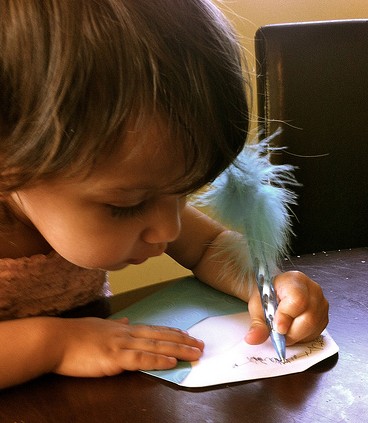The Nuances of Deep POV – Part 4
Deep POV is truly all about voice. I pointed out in a previous post that there is a difference between the author’s writing style and each character’s voice. Voice isn’t just how a character speaks out loud—nor is it about their “inner voice” as they think specific thoughts. It’s every line of the scene.
I really want to drive this home because too many beginning writers—well, seasoned ones too—write every scene with the same style and vocabulary. In real life, hardly anyone talks like anyone else, and, while I can’t read minds, I’m guessing that no one thinks in the same manner as you—the way you form sentences and paragraphs, move from one thought to another.
There are certainly novels—many in the literary genre—that are written in a stylized narrator voice. We know there is a storyteller, whether we are told who that person is or not. That storytelling voice pervades the entire work, as expected.
Diane Setterfield’s Once upon a River is a magical tale told by such a storyteller. The opening lines set this up:
There was once an inn that sat peacefully on the bank of the Thames at Radcot, a day’s walk from the source. There were a great many inns along the upper reaches of the Thames at the time of this story and you could get drunk in all of them, but beyond the usual ale and cider each one had some particular pleasure to offer.
But with most commercial fiction, each scene’s “voice” is dictated by the POV character, and so the entire scene, experienced by the character, is conveyed by and through that character.
It doesn’t matter whether you are writing in first person or not. The principle applies regardless.
In last week’s post I talked about setting the stage through a character’s senses. You want to show only what your character would notice.
Think about your POV character. What are his strongest senses? What things would he be most aware of? How important, for instance, is the weather to him?
If you have a young character who is obsessed with skateboarding, how much do you think he’s going to pay attention to the weather when he runs outside early on a cold fall morning to ride? His mother may yell out to him to get back in the house and put on a sweatshirt as he’s crunching fall leaves under the wheel of his board.
No, the weather is not on his radar. But have him get a whiff of burgers once the morning warms and his stomach is growling, and he’s going to pay a lot of attention to his mouth watering and the delectable smells emanating from his friend’s yard.
An older woman with seasonal affective disorder is going to notice and think about a cold, stormy day in a different way than that focused teen.
Beyond all that, ask: How can I use the things my character notices to tell readers something about her? About her life, her core need, her fears and worries and desires? What we pay attention to tells volumes about who we are.
Make a list of things you need your reader to eventually get to know about your character. Then think how to put her in places and situations that can trigger natural thoughts and reactions that will reveal those things.
Don’t pass on this exercise. There are things you need your reader to know about Mary or John, and you do not want to share them in your author voice in the form of “telling.” You need to find ways to show every single thing about these characters, through dialogue, direct thoughts, action, or narrative.
Any and all of those ways are fine, but they can be done amateurly or masterfully. Your choice.
Take a read, then, of an opening page of a scene I chose at random in Jesmyn Ward’s NYT’s best-selling novel Sing, Unburied, Sing:
Richie
The boy is River’s. I know it. I smelled him as soon as he entered the fields, as soon as the little red dented car swerved into the parking lot. The grass trilling and moaning all around, when I followed the scent to him, the dark, curly-haired boy in the backseat. Even if he didn’t carry the scent of leaves disintegrating to mud at the bottom of a river, the aroma of the bowl of the bayou, heavy with water and sediment and the skeletons of small dead creatures, crab, fish, snakes, and shrimp, I would still know he is River’s by the look of him. The sharp nose. The eyes dark as swamp bottom. The way his bones run straight and true as River’s: indomitable as cypress. He is River’s child.
Here is strong and authentic voice. Without knowing anything about Richie, we get a feel of his background by the words he chooses and the things he notices. We sense he’s in and from the South in this Southern Gothic novel set in Mississippi because of the sensory details he notices. (There are other bits that would be helpful to know about this character, but I don’t want to give away the plot.)
Here’s another of her characters, Leonie, describing Maggie:
When I walk past her, she smells like lotion and soap and smoke, but not cigarette smoke: like fallen burnt oak leaves. She has Michael’s face. I startle when I walk past because it’s so strange to see his face on a woman: narrow jaw, strong nose, but the eyes are all wrong, hard as green marbles. … Big Joseph and Maggie stand side by side, touching but not. She’s taller than the pictures, and he’s shorter.
 This same character talks about her father, Pop. Pay attention to how she uses a present moment in time—something she notices—to bring in a bit of character backstory about Pop. Events in the present action should always trigger memories. When information is just plopped into a scene without a trigger, it’s an info dump. And you want to avoid those because … as you should know … they are “out of POV.”
This same character talks about her father, Pop. Pay attention to how she uses a present moment in time—something she notices—to bring in a bit of character backstory about Pop. Events in the present action should always trigger memories. When information is just plopped into a scene without a trigger, it’s an info dump. And you want to avoid those because … as you should know … they are “out of POV.”
Michaela is disentangling herself from Pop’s arms, and Jojo is carrying her into the house. Here, Pop is a dusky smudge, the tattoos on his arms lit up in a flash with the lighter, and then out again. When I was younger, I would sneak and stand next to him when he took a nap on the couch, smell his breath, the way it smelled of tobacco and mint and musk, and I would trace over his tattoos with my pointer finger, without touching him, just follow the illustrations around …
Go through your scenes and question every line.
- Does this sound like my character?
- Would she use these words, this syntax?
- Would she notice these things?
- What things should she be noticing that she doesn’t?
- What sensory details would she pay attention to?
- What mood is she in at this moment, and how can I rewrite the sentences to convey her mood? (Pay particular attention to verbs and adjectives.)
- What is her most pressing concern right now, and how can that influence and color what she is noticing and how she is describing what she experiences?
Work hard on your POV to go deep and authentic so that readers hear your characters’ voices and get to know them instead of hearing you tell them a story.
Be sure to read the previous posts on this topic:
Featured Photo by krakenimages on Unsplash












Wow. Very masterful. No, that does not sound like my characters. I am going to have to work to make it so. I’m totally weak on descriptions, preferring to get straight to dialogue and action. How do you find the balance between “too much” description and not enough? In your example of “River’s child” I agree it gives depth and color and sensory enhancement to the story. So much of today’s writing is all about the rush to tell the story, the minimizing of anything that isn’t plot-driven. Readers are lazy we’re told. The market for “literary works” is small. How can we find a balance between the two?